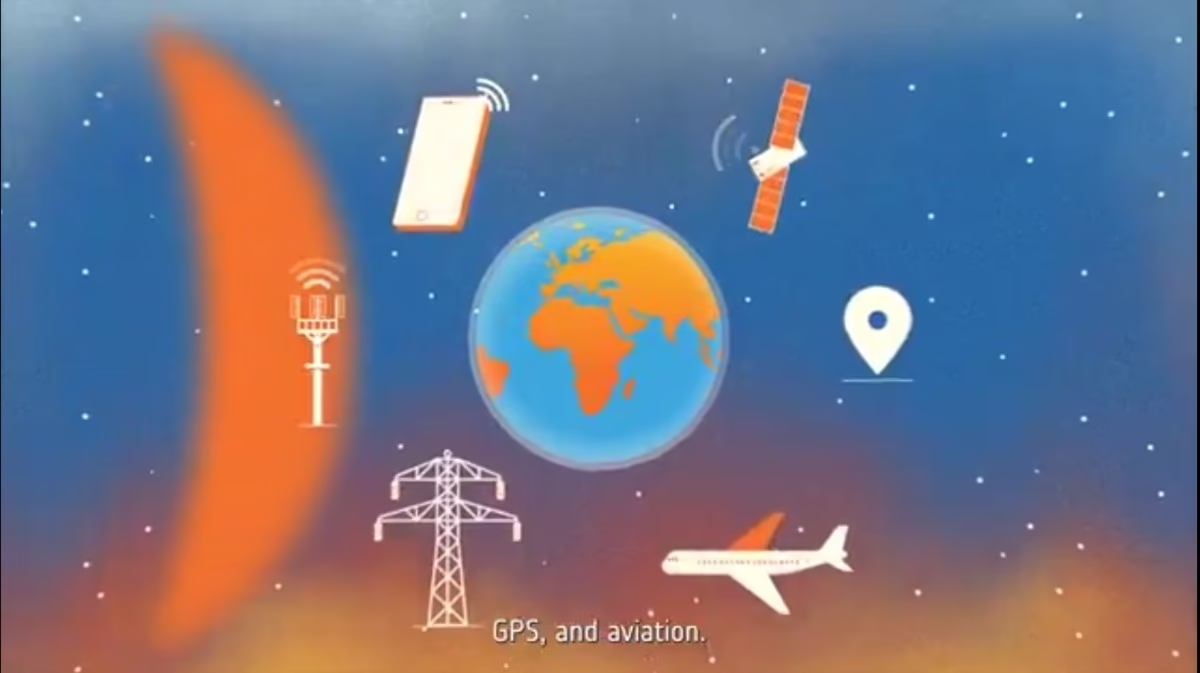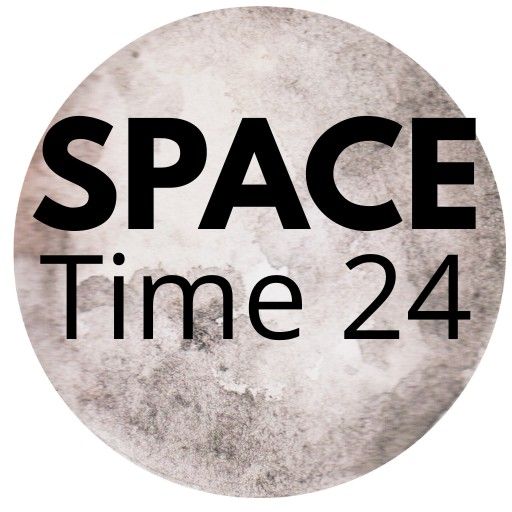The ESA Vigil space weather mission will revolutionize solar storm forecasting with real-time monitoring from Lagrange Point 5, protecting Earth’s critical systems. Let’s know how ESA’s Vigil Mission save us from solar storm-
 Vigil satellite by ESA will act as an early warning system for solar storms, protecting Earth’s infrastructure from space weather impacts.
Vigil satellite by ESA will act as an early warning system for solar storms, protecting Earth’s infrastructure from space weather impacts.
Introduction: ESA Vigil Space Weather Mission
A significant advancement in space weather monitoring is on the horizon with the launch of the ESA Vigil space weather mission. Designed to act as an early warning system for solar storms and other cosmic disturbances, the Vigil mission is poised to revolutionize the way humanity protects its satellites, astronauts, and vital terrestrial infrastructure from the unpredictable nature of the Sun.
Recent years have witnessed an alarming increase in solar activity. From intense solar flares to geomagnetic storms causing auroras visible across Europe, the Earth’s atmosphere has become a canvas of both beauty and concern. While these natural light displays are awe-inspiring, they are also indicators of powerful space weather events capable of disrupting power grids, GPS systems, and communication satellites.
Enter Vigil — a cutting-edge mission developed to monitor and report space weather events in real-time. With advanced instrumentation and a strategic location in space, Vigil will provide early warnings that can help mitigate the risks posed by solar activity.
Why Space Weather Forecasting Matters: ESA Vigil Space Weather Mission
Space weather refers to the environmental conditions in space as influenced by the Sun and solar wind. Events such as coronal mass ejections (CMEs), solar flares, and geomagnetic storms can significantly affect life on Earth. These solar events can:
- Disrupt satellite operations
- Interfere with aviation communication and navigation systems
- Damage electrical power grids
- Pose health hazards to astronauts in orbit
- Impact military and civilian space operations
The increasing dependency on satellite-based technologies makes accurate space weather prediction more important than ever. The Vigil space weather mission is tailored to fill existing gaps in observation and forecasting capabilities.
The Role of the Vigil Mission: ESA Vigil Space Weather Mission
The Vigil mission is a European Space Agency (ESA) initiative that aims to provide real-time monitoring of the Sun’s activity. Unlike Earth-based observatories, which can be affected by atmospheric distortion and limited visibility, Vigil will be stationed at the Lagrange Point 5 (L5), a stable position in space that offers a unique sideways view of the Sun.
From L5, Vigil can observe the Sun’s surface and detect solar activity before it becomes Earth-facing. This location gives scientists and space agencies a crucial time advantage — in some cases, up to several days — to prepare for potential impacts.
The primary objectives of the Vigil mission include:
- Early detection of solar flares and CMEs
- Real-time space weather monitoring
- Data transmission to Earth for analysis and forecasting
- Support for satellite operators, power grid managers, and civil aviation authorities
Advanced Instruments on Board Vigil: ESA Vigil Space Weather Mission
Vigil will carry a suite of advanced scientific instruments, each designed to gather specific data on solar and heliospheric activity. Some of the key instruments include:
- Coronagraphs: For imaging the Sun’s outer atmosphere to detect CMEs.
- Heliospheric imagers: To track solar wind and particles as they travel through space.
- Magnetometers: To measure the strength and direction of interplanetary magnetic fields.
- Particle detectors: To analyze solar energetic particles that pose radiation risks to astronauts and satellites.
- Radiometers and UV sensors: For monitoring solar radiation and flare intensities.
These instruments will work in tandem to deliver continuous, high-resolution data, enabling space weather models to predict threats with higher accuracy than ever before.
Recent Events Highlighting the Need for Vigil: ESA Vigil Space Weather Mission
In 2023 and 2024, the world witnessed a rise in solar activity, including powerful solar flares and magnetic storms. These events led to visible auroras over regions such as Europe and Canada, far beyond their typical polar boundaries. While visually spectacular, these solar storms caused disruptions in satellite communications, delayed airline flights, and impacted power systems.
Such incidents underscore the necessity for proactive monitoring. The Vigil mission will provide the early warnings required to initiate protective actions like shutting down sensitive satellite components, re-routing flights, or adjusting power loads in electrical grids.
International Collaboration and Preparedness: ESA Vigil Space Weather Mission
The Vigil mission is not an isolated effort. It represents a significant collaboration between ESA, NASA, and other international partners. Global coordination is essential when it comes to responding to space weather threats, as the effects can span continents and disrupt global systems.
Agencies such as NOAA in the United States and the UK’s Met Office Space Weather Operations Centre will use Vigil’s data to issue alerts and advisories to governments, commercial sectors, and the general public.
Vigil’s Strategic Position at Lagrange Point 5: ESA Vigil Space Weather Mission
Lagrange Points are positions in space where the gravitational forces of Earth and the Sun balance the orbital motion of a spacecraft. L5 lies approximately 150 million kilometers from Earth and trails the planet in its orbit around the Sun. This position provides an advantageous sidelong view of the Sun, offering perspectives not possible from Earth or satellites in low Earth orbit.
From L5, Vigil can observe solar regions not yet visible from Earth, allowing it to spot sunspots and solar eruptions in advance. This extended visibility window could transform how we plan and protect against space weather events.
Protecting Earth and Space Infrastructure: ESA Vigil Space Weather Mission
As the world moves toward increasingly digital and interconnected systems, the vulnerability to space weather grows. Communications, defense systems, navigation, and financial transactions all rely heavily on satellite infrastructure. A severe solar storm, similar in magnitude to the 1859 Carrington Event, could potentially disrupt global infrastructure on a massive scale.
The Vigil space weather mission acts as a safeguard against such events. By providing advance warnings and detailed analysis, it enables governments, businesses, and institutions to prepare and respond effectively, thereby reducing risks to both space-based and ground-based systems.
Future Implications and Beyond: ESA Vigil Space Weather Mission
Vigil is a step toward a comprehensive space weather warning network. Its success could pave the way for more observatories positioned at other Lagrange Points and even around other celestial bodies like Mars or the Moon. The long-term goal is to establish a robust planetary defense system that not only forecasts space weather but also tracks near-Earth objects and cosmic threats.
As space exploration intensifies and more missions venture beyond Earth orbit, maintaining the safety of astronauts and spacecraft will depend heavily on the real-time insights provided by missions like Vigil.
The Vigil space weather mission marks a new frontier in humanity’s ability to understand, forecast, and respond to the powerful forces emitted by our Sun. From its strategic vantage point at Lagrange Point 5, Vigil will monitor the Sun’s activity with precision, offering advanced warnings that can help protect vital systems on Earth and in space.
Conclusion: ESA Vigil Space Weather Mission
As we enter a new era of solar activity, Vigil stands as a symbol of preparedness, innovation, and international cooperation. With its launch, the Earth gains not just a new satellite — but a vigilant guardian against the volatile cosmos.
https://x.com/esa/status/1945759598515790191?t=eNsHAAzHtce4d_It3XbCoA&s=19
FAQs: ESA Vigil Space Weather Mission
Q1. What is the Vigil space weather mission?
A: The Vigil space weather mission is an upcoming European Space Agency (ESA) satellite initiative designed to monitor solar activity and provide early warnings for potentially harmful space weather events such as solar flares and coronal mass ejections.
Q2. Why is the Vigil mission important?
A: Vigil will improve space weather forecasting by detecting solar activity before it impacts Earth, helping to protect satellites, power grids, astronauts, aviation, and other critical infrastructure.
Q3. Where will the Vigil satellite be located?
A: The Vigil spacecraft will be positioned at Lagrange Point 5 (L5), about 150 million kilometers from Earth. This point offers a unique sideways view of the Sun, allowing early detection of solar storms.
Q4. What instruments will be onboard the Vigil satellite?
A: Vigil will carry advanced instruments including coronagraphs, heliospheric imagers, particle detectors, magnetometers, and UV sensors to monitor the Sun’s activity and solar wind in real time.
Q5. How does Vigil help protect Earth from solar storms?
A: By spotting solar activity before it faces Earth, Vigil provides advanced warnings, giving governments and industries enough time to shut down vulnerable systems, reroute flights, or protect satellites from damage.
Q6. When is the Vigil mission expected to launch?
A: ESA plans to launch the Vigil mission in the coming years, with development and international cooperation currently underway. The official launch window will be announced closer to completion.
Q7. Who is involved in the Vigil mission?
A: The mission is led by the European Space Agency (ESA) with collaborations from NASA, NOAA, the UK Met Office, and other international space weather organizations.
Q8. Can Vigil predict all space weather events?
A: While no system can predict every event perfectly, Vigil will significantly enhance our capability by detecting early signs of solar activity, improving the accuracy and lead time of space weather forecasts.
Q9. How will Vigil benefit everyday life on Earth?
A: Vigil will help prevent disruptions to GPS, internet, aviation, and power systems, which are increasingly vulnerable to solar storms. It also helps ensure the safety of astronauts aboard the ISS and future space missions.
Q10. What makes Vigil different from other space weather missions?
A: Unlike Earth-based or near-Earth satellites, Vigil’s position at L5 offers a side-angle view of the Sun, allowing early detection of solar regions not yet visible from Earth — a strategic advantage in space weather forecasting.
